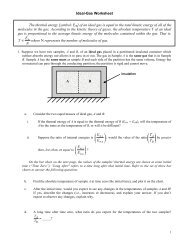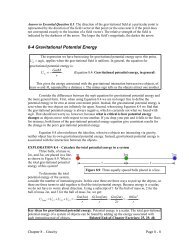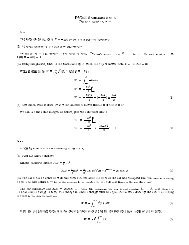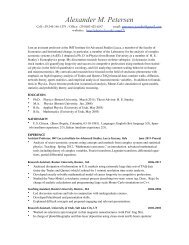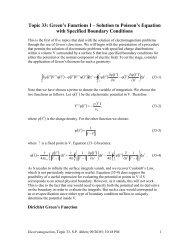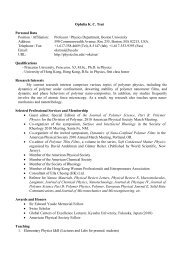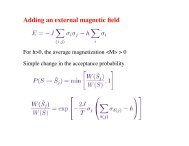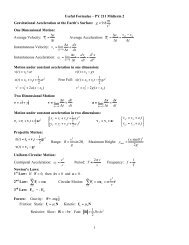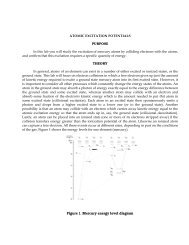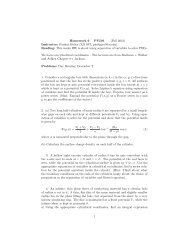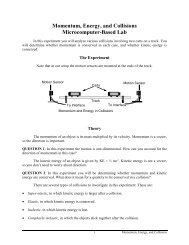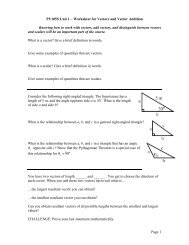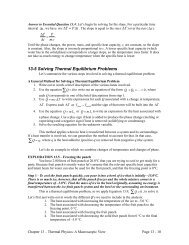Crystal Structure 1 3.1 Some Basic Concepts of Crystal Structure ...
Crystal Structure 1 3.1 Some Basic Concepts of Crystal Structure ...
Crystal Structure 1 3.1 Some Basic Concepts of Crystal Structure ...
You also want an ePaper? Increase the reach of your titles
YUMPU automatically turns print PDFs into web optimized ePapers that Google loves.
<strong>Crystal</strong> <strong>Structure</strong><br />
The above result can be generalized to an arbitrary reciprocal lattice vector, G = hA + kB<br />
+ lC. In other words, G is related to the plane (h k l) by the following relations:<br />
(1) G is normal to the plane (h k l).<br />
(2) The distance d hkl between adjacent planes with the Miller indexes (h k l) is given<br />
by 2/|G|.<br />
Pro<strong>of</strong>:<br />
(1) By definition, a plane (h k l) intersects the<br />
crystallographic axes along a, b and c at the points<br />
l 1 a, l 2 b and l 3 c, respectively, where<br />
l1 : l2<br />
: l3<br />
<br />
1 1 1<br />
: :<br />
h k l<br />
where l 1 , l 2 and l 3 are integers. Now, all planes whose<br />
intercepts fulfill the above relation are parallel.<br />
Therefore, it suffices to prove that the one plane with intercepts 1/h, 1/k and 1/l is<br />
perpendicular to G. One may observe that any vector on this plane can be expressed as a<br />
linear combination <strong>of</strong> the vectors (1/h)a – (1/k)b, (1/k)b – (1/l)c and (1/l)c – (1/h)a. It<br />
follows that if G is perpendicular to all <strong>of</strong> these three vectors, G must be parallel to (h k<br />
l). As shown below, this is indeed the case.<br />
Note that this pro<strong>of</strong> works only if none <strong>of</strong> h, k or l is zero. Suppose l = 0. Then the plane<br />
to be considered is spanned by (1/h)a – (1/k)b and c. It is straightforward to show that hA<br />
+ kB is perpendicular to these two vectors. In the case where two <strong>of</strong> the Miller indices<br />
are zero, say k = l = 0, G = A. We have shown above that it is perpendicular to the (1 0 0)<br />
plane (eqn. 3.8).<br />
12



![arXiv:1303.7274v2 [physics.soc-ph] 27 Aug 2013 - Boston University ...](https://img.yumpu.com/51679664/1/190x245/arxiv13037274v2-physicssoc-ph-27-aug-2013-boston-university-.jpg?quality=85)
